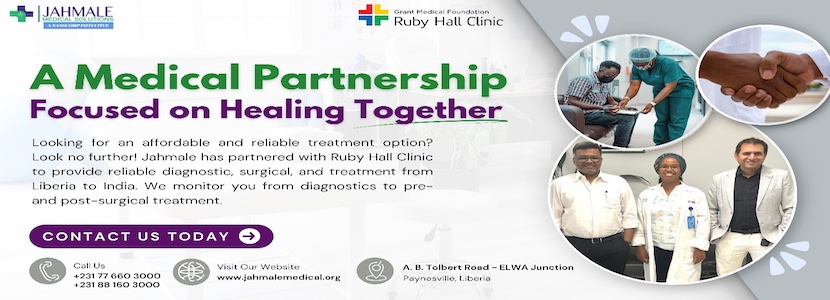
The recent comments by Liberia’s Minister of Finance, that Liberia is “exporting” electricity to its immediate eastern neighbor, Ivory Coast generated a lot of laughs and comic relief on social media and in local gatherings for good reason, especially since he uttered it during multiple instances of power fluctuations. Liberia is a Country that is still in post-war recovery in providing reliable electricity for its own population with many communities either still in darkness or with inconsistent electricity. So, to the average Liberian, the mere thought of “exporting” electricity – a technical concept that baffles any layman’s understanding of how that even works, was laughter for the soul.
Nonetheless, the function of trading electricity across borders is in fact real, but just not realistic for Liberia today. In fact, a lot has been happening in Africa’s energy sector for nearly three decades beginning in 1995 when the first of five regional “Power Pools” was created on the continent, allowing multiple countries within a region to connect or “pool” together their national power grids to achieve exactly what the Minister spoke to regarding Liberia—albeit prematurely on his part. These Regional Africa Power Pools are to expand opportunities for electricity within respective nations and trade across borders the ‘excess’ or ‘unused’ electricity that is generated by a particular country operating in a particular Regional Pool. So yes, the Minister’s assertions that we sent current to Ivory Coast would make a lot of sense if we were in fact generating excess electricity thereby allowing us to sell or trade with our neighbors. Obviously Liberia lacks that capability at present—hence the reason many saw it as hilarious. In fact it is actually The Ivory Coast that is sending electricity to Liberia.
Africa is well endowed with multiple sources for power generation, including hydropower, coal deposits, geothermal, wind, solar, petroleum, biomass, natural gas, among others. Ample sources for electricity generation has never been Africa’s problem. Our problem is the necessary political will for directing national resources towards investing in infrastructure to make things happen, amid ever present corruption, instability, and fiscal mismanagement. The African Development Bank (AfDB) estimated that to achieve universal electricity access by 2025, with emphasis on clean and renewable energy, Africa needs an additional 160 GW of new capacity, 130 million new grid connections, 75 million new off grid connections and providing 150 million households access to clean cooking solutions. Gigawatt (GW) measures power generation from multiple power plants. Africa, according to AfDB, requires USD $60 billion to USD $90 billion invested per year to achieve those goals. AfDB estimates that over 640 million Africans have no access to energy, which is consistent with an electricity access rate of just over 40% in Sub-Saharan Africa, said to be the lowest in the world. The per capita consumption of energy in Sub-Saharan Africa apart from South Africa is 180 kWh, compared to 13,000 kWh per capita in the United States and 6,500 kWh per capita in Europe. Africa continues to lag far behind.

So, to add some context to the Minister’s comic relief, here is a summary of the five Regional Africa Power Pools to help put things in proper context:
- In 1995, the Southern Africa Power Pool (SAPP) was established which now includes 12 countries and is definitely the most advanced of the five Regional Power Pools, generating at present 119 GW of electricity, according to SAPP recent progress reports.
- In late 1999, the Economic Community of West African States (ECOWAS) established the West Africa Power Pool (WAPP) which includes 14 countries across the region, however the realization of the WAPP would not come into full existence until 2006 when Heads of State agreed on the functionality and operations of the initiative, although it was established over twenty years ago. Reportedly, WAPP capacity today is around 16 GW.
- The Central Africa Power Pool (CAPP) was created in 2000 and consists of 11 Countries within the Economic Community of Central African States and is said to be the least developed of the five power pools but with massive potential for power generation given the natural resources and abundant water in the region. A recent report by the Infrastructure Consortium of Africa had the region generating only 26 GW, given its size. This includes several countries that spill over into multiple regional power pools, the largest of which is the Democratic Republic of Congo (DRC) which literally because of its sheer size crosses over into the East, Central and Southern Africa Power Pools.
- In 2005 the East Africa Power Pool (EAPP) was created, which began active cross border trading as recently as in 2018. Today, there are 14 countries participating in the EAPP and it is generating 72 GW and still has a surplus of 17,558 MW after peak demand.
- The last of the Power Pools covers North Africa and includes 7 Countries, and because of proximity, it connects to Europe through the Morocco to Spain grids and links to the Middle East via the Egypt to Jordan grids. This Power Pool is known as Maghreb Electricity Committee (COMELEC). Current generation is above 133 GW.

So for sure, the ability for Liberia to one day “export current,” will be made possible through TRANSCO CLSG which began in 2014 and is implementing the Cote D’ivoire, Liberia, Sierra Leone, and Guinea (CLSG) project. TRANSCO was established under a ratified trade agreement with the four Countries and is a special purpose vehicle to connect the power grids of the four Mano River Union Countries towards achieving the objectives of the West Africa Power Pool (WAPP). When completed, the anticipated power to be transmitted is 290 MW which will positively impact MRU’s 54 million population by supplementing national power generation capabilities in the respective countries, allowing for the cross border trading referenced by the Minister in cases where one country needs power and the other has excess power to trade. At present, Liberia produces far less than even its own demand from the Mt. Coffee Hydroelectric Dam and all other sources to be able to export, despite a reported generation potential for well over 1,000MW if additional reservoirs and mini dams are ever built along the St. Paul River corridor. Liberia is nowhere near that potential, let alone ready to export to its neighbors. One day perhaps, but not today.
Africa’s trading partners have been instrumental in the expansion of the five Regional Power Pools. The United States for example, has been a major investor through its Power Africa initiative, which includes investments made through USAID, the Development Finance Corporation (DFC) formerly Overseas Private Investment Corp (OPIC) and other private and public sector players. In addition, multilateral financiers including the World Bank, AfDB and others have mobilized financial and other resources over the years to support ongoing efforts in Africa Power Pools. USAID reports that since 2013, the US Government has provided support to 40 African Countries, sent over 70 technical advisors to 20 countries, closed 145 transactions generating 14,000 MW. In its 2022 report on Power Africa, USAID reports that USD $234 million was invested in the period and plans to mobilize another USD $350 million over the next five years. There can be no argument about the direct relationship between affordable access to energy and national development. Hopefully one day, when any Cabinet Minister tells us about exporting electricity to one of our neighbors, we will accept it as highly probable and not collectively burst out laughing while our lights flicker.















